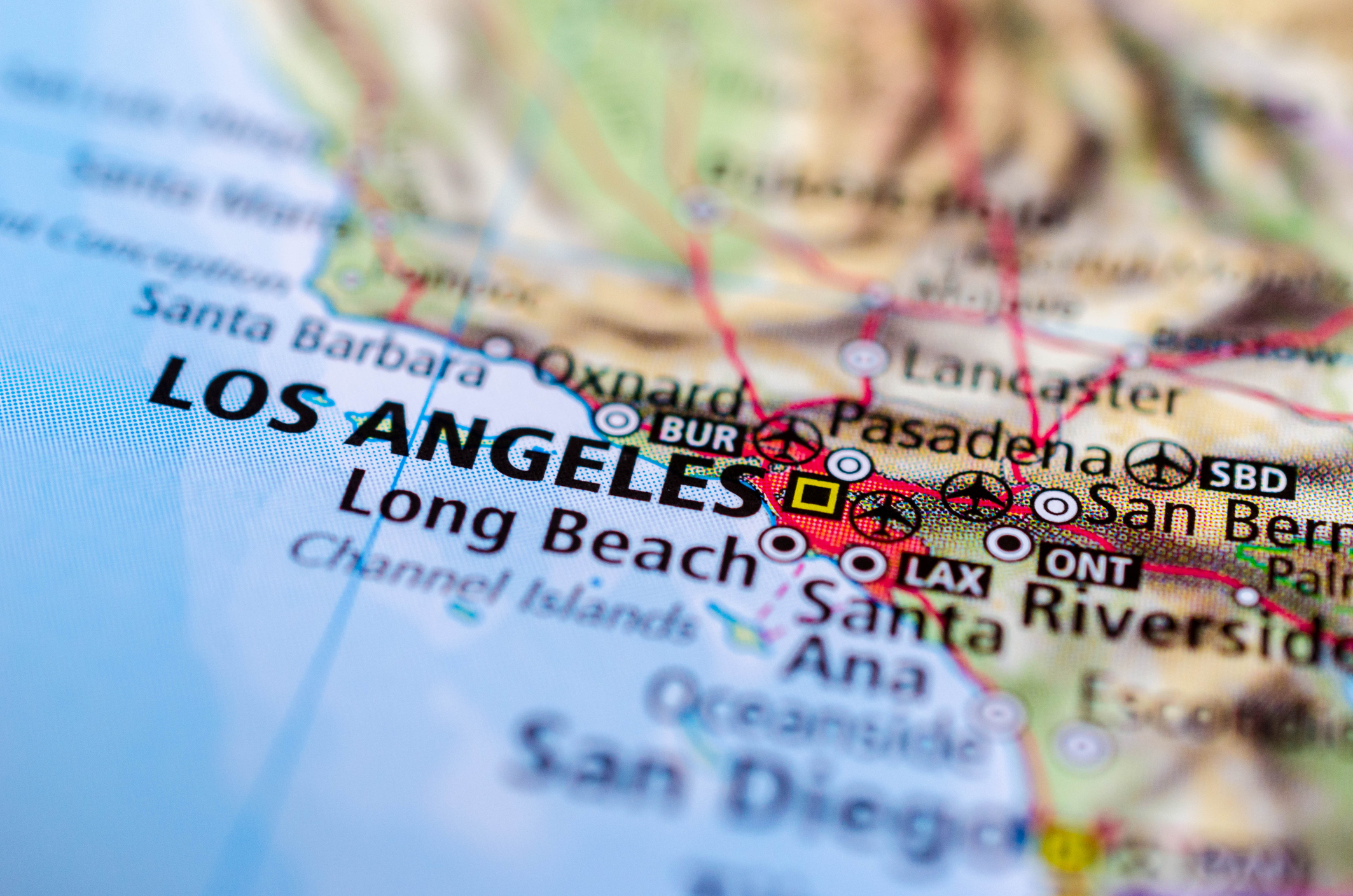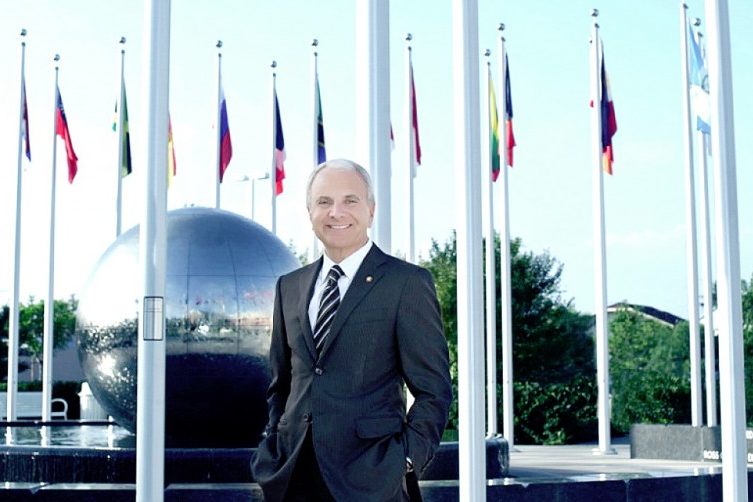Since 2011 the Consulate General of Italy in Los Angeles has undergone radical changes, and not only in terms of location, as it now overlooks the entire city from the new offices in Century City.
Even more important, its approach has significantly evolved by capitalizing on new communication technologies, social networking, and strategic partnerships with the private sector, in order to keep abreast of a country – Italy – which is constantly reinventing itself without losing its millennial identity.
Such a challenging endeavor has been taken on by Consul General Giuseppe Perrone, whose primary goal has been to create a comprehensive institution, offering efficient public services but also promoting Italy in all aspects, from culture to trade, so as to “maximize the country’s exposure and presence on a daily basis.”
In this regards, as he underlines, the initiative 2013 – Year of the Italian Culture in the United States, which is coming to an end with a bunch of first-class celebrations, has represented a powerful instrument to pursue this objective with remarkable results. And on the occasion of an exclusive interview in the beautiful new headquarters, we asked him to take stock of this year’s achievements.
Consul General, what has been the sense of the Year of the Italian Culture in the United States?
First of all, it has given us the opportunity to strengthen and modernize the image of our native country through a number of events taking place all around the U.S. and featuring unconventional, innovative expressions of the Italian spirit, along with most traditional ones. This has allowed the local public, who has always been fascinated by Italy, to discover lesser-known and up-to-date examples of its contemporary intellectual life. In the attempt of presenting an authentic image of a heterogeneous and ever-changing country, boasting a unique heritage but not afraid of transformation, this year has been rich in classical museum exhibitions and opera concerts juxtaposed to unexpected science and technology-themed events.
And how has the local community responded?
All the initiatives part of the Year of the Italian Culture in the United States have been designed to address not only the Italian or Italian American public, but everybody who is interested in our country. Especially in a megalopolis like Los Angeles, where so many different cultural identities coexist and interact, it is essential to involve the community as a whole. And audience response has been enthusiastic, as well as the participation of local institutions, sponsors, and partners such as museums, universities, private companies.
The Consulate General has worked hard to strengthen such fruitful relationships, also thanks to an extraordinary team which includes the Italian Cultural Institute, the Italian Trade Commission, the Italian Tourism Board, and the Italian American Chamber of Commerce West. And of no less importance has been the support of so many vibrant Italian American associations in the area, committed to preserve the ties to Italy and bringing together cultured people who look at a new, updated type of connection with our country. We are sincerely grateful to all our partners for their contribution in realizing successful events throughout the year 2013 but also in the past, and hopefully in the future.
How would you describe the local Italian American community? And what is the attitude of the new generations?
The local Italian American community as well as the city itself have welcomed me with open arms since the very beginning. I like the way Los Angeles brings out the best in every person, and people here have the opportunity to express themselves and their talents. In such a multicultural city, attracting a constant flow of professionals, artists, members of the show business, the Italian American community is constantly enlarged and enriched by new generation immigrants who can easily blend into this cultural mix. They have a deepest knowledge of contemporary Italy, and can help disseminate it. Therefore, the local community has become extremely heterogeneous, sophisticated, and keen about Italian creativity in all its representations. It is proudly linked to its heritage, but at the same time fully integrated in the Southern California environment.
Unlike new immigrants, second generations are in danger of losing the inherited bond to Italy. For this reason, the Year of the Italian Culture in the United States has aimed at renewing the meaning of and the interest in the Italian identity. Actually, the initiative has involved not only the city of Los Angeles but all Southwestern United States, being the perfect occasion to boost the presence of the Italian institutions in areas like Arizona, New Mexico, Nevada, and Southern California with a major success.
What do you consider to be the point of strength of the Year of the Italian Culture in the United States? Has it exclusively focused on a cultural perspective?
We have always worked to serve Italy’s interests in all fields, but the value that the Year of the Italian Culture in the United States has added to our effort lies in the strengthened collaboration between the institutions and the private sector to design and realize amazing events. This has created new opportunities and enabled a productive exchange of views. In addition, culture hasn’t been the only protagonist of this initiative. The aerospace industry, for example, plays a significant role in the economy of Southern California, and it has started to draw the attention of Italian companies working in the high-tech sector.
Also, many of the projects organized in 2013 were actually borderline between cultural promotion and commercial interests. Among them were the stunning exhibitions dedicated to Gio Ponti’s art – aimed at celebrating his legacy as much as at making modern Italian design known -, and the impressive bronze replicas created by Marinelli Artistic Foundry in Florence according to a centuries-old tradition, which also have a high economic value.
Among this wide range of events, which has been the most challenging to realize? And does any of them have a special meaning for you?
The innovative format of Gio Ponti’s exhibition, the same of Marinelli’s, has been the most complex in terms of logistics and installation operations to make the artworks accessible to the public. And yet we will certainly use it again in the future, considering how enthusiastically it has been greeted.
A project I am particularly fond of is the video documentary regarding the role of Italian scientists in space exploration that the Consulate General has produced in collaboration with the Jet Propulsion Laboratory of Pasadena. We are very proud of this completely new production, which has been self-financed thanks to our partnership with the private sector.
How could we better promote our native country?
Even if the Italian traditional identity is clearly recognizable, Italy has a rich and varied cultural heritage: there is always something new to learn, to admire, and to promote. I really believe this is the main asset of our country. Nevertheless, we need to expand the cooperation with the private sector and to invest in innovation, especially in Los Angeles, as being innovative is essential to defeat competition and gain exposure. In this regard, communication is crucial. Therefore we have modernized and made our external communication more effective through the web site, newsletters, email blasts, and social media. Step by step, the Consulate General of Italy in Los Angeles has become a comprehensive institution serving Italy’s interests in all sectors.
Can we ask for a preview of next events to conclude the Year of the Italian Culture in the United States?
The program will still include the prestigious film festival Cinema Italian Style 2013, organized in collaboration with Cinecittà Luce and the Italian Trade Commission, emphasizing Italy’s presence at the Academy Award 2013. A few weeks later, the Orchestra Italiana del Cinema will play renowned soundtracks in a special concert at the UCLA. And in 2014, world-famous composer Ennio Morricone will perform in Los Angeles for the first time in history.
So the result seems to be positive and encouraging, isn’t it?
Absolutely. The year 2013 has been extremely favorable for both the Consulate General and this particular initiative promoting Italian culture in the United States. Most likely, the interest and enthusiasm it has aroused will persist in the future. We should see that every year is the Year of the Italian Culture.





























